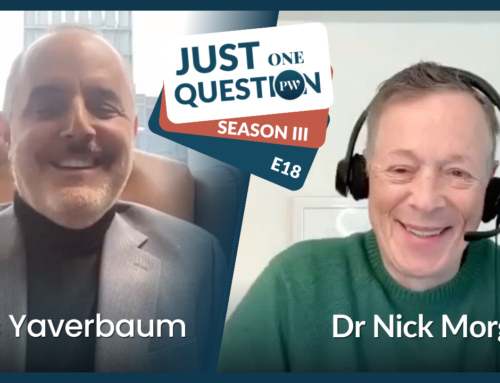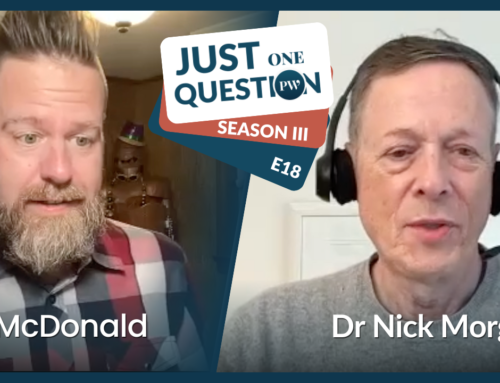I had the great pleasure of a conversation with Allison Shapira, a fellow speaking coach, the other day, and when two speaking coaches get together, they naturally dish about their pet peeves and the trends they see in public speaking. We’ll get to that in a minute. But first the basics. Allison began her professional life as an opera singer but grew disillusioned with the confines and the grind of the profession. She turned to diplomacy, working for the Israeli consulate, and found herself coaching people on public speaking on the side. After a Master’s at the Harvard Kennedy School, that side hustle grew to a full-time business seven years ago, based in Washington DC. Today she runs a company of 7 people, focusing on corporations, non-profits, and, yes, a few diplomats. She also teaches public speaking at the Harvard Kennedy School. Just recently she wrote an overview of the process of getting you and your speech ready to deliver on stage, Speak with Impact: How to Command the Room and Influence Others, published by HarperCollins Leadership, and that was the immediate cause of our conversation.
Nick: What are you most passionate about in the coaching and training business? Where’s the heart of your work?
Allison: I love helping people find their voice, build their confidence, and move up in their careers. I love taking people who have solid technical skills and giving them the communication skills to become powerful leaders. Seeing them step into leadership roles as a result of our training is so validating. In addition, hearing the impact this training has on their personal lives outside work, when they can speak up for a special program at their child’s school or support an historic building in their community, is incredibly meaningful.
Nick: Tell me about the book. Why did you write it, and whom is it for?
Allison: I wanted to provide a practical guide for the busy professional, for anyone moving up in their career or to a new challenge outside of their career. I wanted to help people get promoted or run for office. I wrote the book to be comprehensive, clear, and concise. I was really delighted when one of my clients said, “This should be required reading in every leadership development program in the country.” If the book helps people find their reason for speaking up, and then gives them the courage to speak, then it will be successful.
Nick: Congratulations on bringing the book out! Now, let’s talk trends. What do you see as the most common public speaking habits today – good or bad?
Allison: In terms of positive trends, I see a growing openness towards authentic, conversational language as opposed to formal, jargon-laced speeches. Audiences want to enjoy a speech, not work hard to try to understand unnecessarily complicated terminology, so this is a very welcome trend. In terms of negative trends, I still hear a lot of uptalk, where people make statements sound like questions, and a good deal of vocal fry. While both men and women are guilty of these bad habits, it seems to have the most negative consequences for women.
Nick: How do you coach people to lose these annoying verbal problems?
Allison: They spread through a kind of linguistic contagion – we pick them up from the people around us at work or at home. The first step is recognition. There, vocal fry is easier to self-diagnose because we can hear it more easily. For some reason, people have a hard time hearing themselves use uptalk. The second step is learning how to modify them. And the third step is remembering to do it regularly, so you don’t slide back into bad habits.
Nick: I assume you focus on the breath?
Allison: Yes, the more we work on breath, the easier it is to give the voice fullness. The sound of someone’s voice is based on their physiology and training, as well as their level of confidence. But it’s not just a technical exercise. When you connect with your sense of purpose, your voice comes to life. So the real key is figuring out why you care about your work. What’s the purpose of it? Once you can answer that question, the body language and voice start to fall in place. Find the inspiration, which will lead you to the right words, and the other pieces will fall into line.
The focus on my work is purpose-driven communication. We may start with the mechanics of breathing and voice, but it goes much deeper than that – it’s really finding the courage to talk about what matters to you.
Nick: What’s most exciting for you right now in your coaching?
Allison: My team and I are bringing together cohorts of high-potential leaders within an organization and working with them over a period of 3-4 months. It’s exciting to see them build their confidence through skills development and take ownership of what they believe in. In my keynotes, I’m starting to bring more music into my programs. One of my messages is authenticity over perfection in public speaking, and I sing both folk music and opera to make that point. While I initially wanted to be an opera singer, it wasn’t until I started singing folk music that I found my authentic voice.
Nick: Allison, thank you, and good luck with both the coaching and the book.









Fantastic interview! Allison, when writing Speaking with Impact, what was the easiest topic to tackle? The most challenging? What is the #1 mistake you would avoid in your speaking career – knowing that hindsight is 20-20? The book sounds like it has tremendous, practical tips. Thanks!
Great interview. Thanks!
Thanks, Eva — good to hear from you.